October 1st, 2009 by Eugene Barsky | No Comments »
Those of us, who teach or use Google or Google Scholar (GS) might find the most recent Peter Jacso’s piece on Google Scholar to be of interest – http://www.libraryjournal.com/article/CA6698580.html?&rid=1105906703&source=title
Please be very careful using this tool. We talk about the perils of GS and compare it with Compendex and Web of Science in our Google workshops.
We ourselves saw those problems almost five years ago, and they are still not corrected:
Giustini D, & Barsky E. A look at Google Scholar, PubMed and Scirus: comparisons and recommendations . J Can Health Libr Assoc 2005, 26(3): 85-89.
Posted in Astronomy, Atmospheric Science, Chemical and Biological Engineering, Chemistry, Civil Engineering, Earth and Ocean Sciences, General Science, Geography, Main, Materials Engineering, Mathematics, Mechanical Engineering, Mining engineering, Physics, Science - undegraduate classes, Statistics, Teaching, Wood Sciences | No Comments »
September 25th, 2009 by Kevin Lindstrom | No Comments »
This week’s issue of Science focuses in CO2 capture and storage.
Articles include
Why Capture CO2 from the Atmosphere?
Round and Round: A Guide to the Carbon Cycle
Onshore Geologic Storage of CO2
Submitted by Kevin Lindstrom Liaison Librarian for Earth and Ocean Sciences
Posted in Atmospheric Science, Chemical and Biological Engineering, Chemistry, Civil Engineering, Earth and Ocean Sciences, General Science, Geography, Mining engineering, Science - undegraduate classes, Uncategorized | No Comments »
September 22nd, 2009 by Kevin Lindstrom | No Comments »
While working at UBC, I’m often amazed by some of the some spectacular sunsets I have ever seen. If you’re interested in learning more about the weather associated with these clouds have a look at the Cloud Appreciation Society website.
If you are interested in learning more about the weather in general, check out the Weather School.
For a more complete list of websites have a look at the Science and Engineering Library subject guide for Atmospheric Sciences
Today’s weather in Vancouver? Kiel?
Submitted by Kevin Lindstrom Liaison Librarian for Earth and Ocean Sciences
Posted in Atmospheric Science, Earth and Ocean Sciences, General Science, Geography, Physics, Uncategorized | No Comments »
September 16th, 2009 by Eugene Barsky | No Comments »
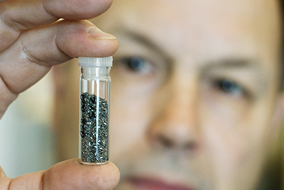
Scott Dunbar is an associate professor in the Norman B. Keevil Institute of Mining Engineering at the University of British Columbia. His recent work on biomining was highlighted in UBC Reports a few months ago – “The virus that binds: A novel idea marries biology and mining”
You can see much of the biomining research in the Web of Science database (for UBC folks, here is the direct link to the appropriate search )
** photo by Martin Dee
Posted in Chemical and Biological Engineering, Chemistry, Earth and Ocean Sciences, General Science, Main, Materials Engineering, Mining engineering, Science - undegraduate classes | No Comments »
August 25th, 2009 by Eugene Barsky | No Comments »
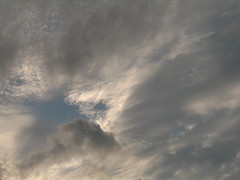
I have posted about climate engineering before. Here is the new article from the last issue of Science that discusses the risks of climate engineering – “Risks of Climate Engineering”
Risks of Climate Engineering
Gabriele C. Hegerl and Susan Solomon (21 August 2009)
Science 325 (5943), 955. [DOI: 10.1126/science.1178530]
This short opinion article presents the points against temperature changes potentially caused by geoengineering…
** photo by http://www.flickr.com/photos/courambel/
Posted in Atmospheric Science, Chemical and Biological Engineering, Earth and Ocean Sciences, General Science, Geography, Main, Physics | No Comments »
July 20th, 2009 by Eugene Barsky | No Comments »
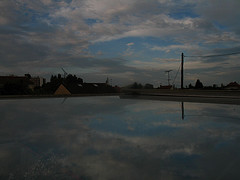
New Scientist reports about the final draft of the American Meteorological Society‘s carefully worded position paper on geoengineering. The AMS is the first major scientific body to officially endorse research into geoengineering.
From New Scientist:
The document states that “deliberately manipulating physical, chemical, or biological aspects of the Earth system” should be explored alongside the more conventional approaches to climate change. Conventional approaches means reducing emissions – “mitigation” in policy-speak – and adjusting to the unavoidable effect of climate change – known as “adaptation”.
The paper states that “even aggressive mitigation of future emissions cannot avoid dangerous climate changes resulting from past emissions. Furthermore, it is unlikely that all of the expected climate-change impacts can be managed through adaptation. Thus, it is prudent to consider geoengineering’s potential benefits, to understand its limitations, and to avoid ill-considered deployment”.
http://www.newscientist.com/article/dn17490-climate-engineering-research-gets-green-light.html?DCMP=OTC-rss&nsref=online-news
** photo by courambel
Posted in Atmospheric Science, Chemical and Biological Engineering, Chemistry, Earth and Ocean Sciences, General Science, Geography, Main, Materials Engineering, Physics, Uncategorized | No Comments »
July 3rd, 2009 by Eugene Barsky | No Comments »
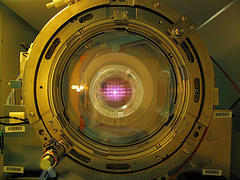
A very recent article on PLoS One is worth the read –
Bollen J, Van de Sompel H, Hagberg A, Chute R, 2009 A Principal Component Analysis of 39 Scientific Impact Measures. PLoS ONE 4(6): e6022. doi:10.1371/journal.pone.0006022
Abstract:
Background
The impact of scientific publications has traditionally been expressed in terms of citation counts. However, scientific activity has moved online over the past decade. To better capture scientific impact in the digital era, a variety of new impact measures has been proposed on the basis of social network analysis and usage log data. Here we investigate how these new measures relate to each other, and how accurately and completely they express scientific impact.
Methodology
We performed a principal component analysis of the rankings produced by 39 existing and proposed measures of scholarly impact that were calculated on the basis of both citation and usage log data.
Conclusions
Our results indicate that the notion of scientific impact is a multi-dimensional construct that can not be adequately measured by any single indicator, although some measures are more suitable than others. The commonly used citation Impact Factor is not positioned at the core of this construct, but at its periphery, and should thus be used with caution.
Frankly, I was surprised by the authors’ conclusion, particularly with this piece: “Our results indicate that the JIF and SJR express a rather particular aspect of scientific impact that may not be at the core of the notion of scientific “impact”. Usage-based measures such as Usage Closeness centrality may in fact be better “consensus” measures.”
I am used to be inquired about Journal Impact Factor (JIF) so often in academia and know that it used for tenure consideration in many departments in UBC.
** photo by testone 22
Posted in Astronomy, Atmospheric Science, Chemical and Biological Engineering, Chemistry, Civil Engineering, Earth and Ocean Sciences, General Science, Geography, Main, Materials Engineering, Mathematics, Mechanical Engineering, Physics, Podcasts, Science - undegraduate classes, Statistics, Wood Sciences | No Comments »
June 9th, 2009 by Eugene Barsky | No Comments »

Thomson Reuters has released its latest figures for Canadian Science last week – http://sciencewatch.com/dr/sci/09/may31-09_2/
Between 2004 and 2008, Thomson Reuters indexed 226,232 papers that listed at least one author address in Canada. Of those papers, the highest percentage appeared in journals classified under the heading of environment/ecology, followed by psychiatry/psychology and geosciences. As the right-hand column shows, the citations-per-paper average for environment/ecology papers from Canada-based authors was 24% above the world average in the field (5.49 cites per paper for Canada versus 4.43 cites for the world). In fact, in all the fields shown here, the impact of Canadian research exceeded the world average, with particularly strong performance in space science (44% above the world average), physics (43% above), and agricultural sciences (+29%).
It is great to see that we are producing a decent share of world’s research. But it seems that Engineering is one of weak points!
** Photo by tripleman
Posted in Astronomy, Atmospheric Science, Chemical and Biological Engineering, Chemistry, Civil Engineering, Earth and Ocean Sciences, General Science, Geography, Main, Materials Engineering, Mathematics, Mechanical Engineering, News, Physics, Science - undegraduate classes, Statistics, Wood Sciences | No Comments »
June 3rd, 2009 by Eugene Barsky | No Comments »
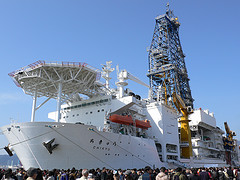
There is an excellent article about the attempt to drill down into the Earth’s crust – and even through the crust, using the equipment aboard Chikyu – Japanese research ship.
It is a relly interesting read – “Ocean monster shows hidden depths”
You can see the relevant research for this area in Web of Science and Meteorological & Geoastrophysical Abstracts (MGA) databases that UBC Library subscribes to…
** photo by kayakaya
Posted in Atmospheric Science, Chemical and Biological Engineering, Earth and Ocean Sciences, General Science, Main, Science - undegraduate classes | No Comments »
May 21st, 2009 by Eugene Barsky | No Comments »
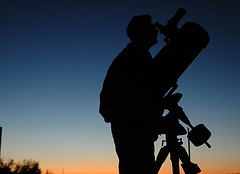
In celebration of the International Year of Astronomy in 2009, New Scientist takes you on an armchair tour of some of the most important telescopes ever built – http://www.newscientist.com/gallery/dn16663-important-telescopes
UBC Library owns dozens of books on telescopes. See some of them here- Telescopes.
** Photo by Space Ritual
Posted in Astronomy, Atmospheric Science, Earth and Ocean Sciences, General Science, Geography, Main, Physics | No Comments »







